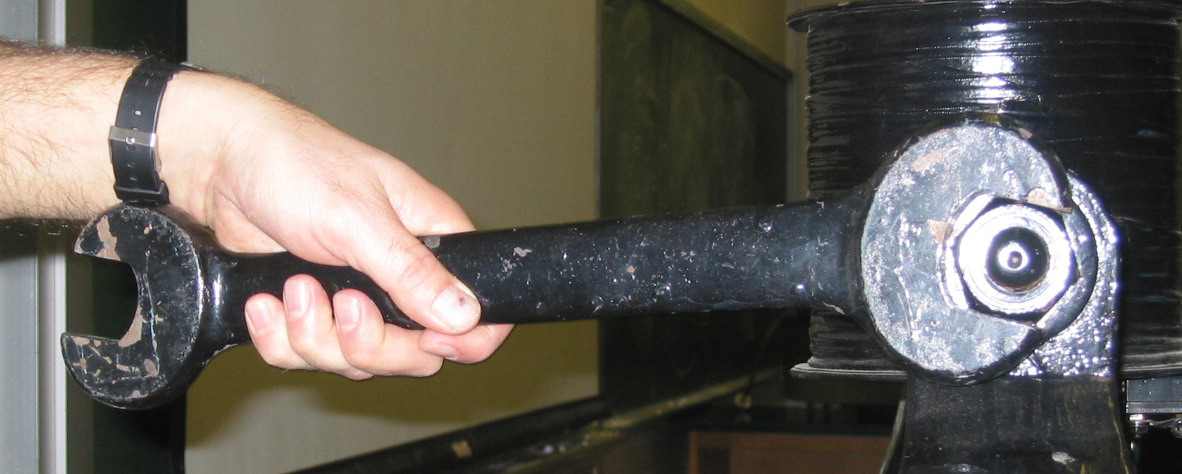Energy transferred = torque x angle turned through

When you twist the lid off of a jar, or tighten a screw, you are applying a torque.
Torque is related to rotation in the same ways that force is related to motion. In particular, we can define a torque by the relationship
Energy transferred = torque x angle turned through

Many tools that we use involve turning a force into a torque. For example, consider a wrench.
To turn a balky bolt, we exert a force at the end of the handle of the wrench. As the wrench rotates through an angle, the end of the wrench moves a distance which is determined by the angle and by the length of the wrench handle If we use radian measure, the relationship is just
distance = angle x length of handle
The energy transferred from us to the bolt is
Energy transferred = distance x force = angle x length x force
Comparing this with the definition of torque shows that
torque = force x length of handle
Although this is a force times a distance, it is different from work, because the force is being applied at right angles to the handle, instead of being in the direction of the handle itself. This relationship explains why a long-handled wrench or a fat screwdriver or a long lever or long-handled pruning shears are useful: by having a small force act far from the axis of rotation we get a large torque.
The concept of torque is also useful to describe how to make wheels turn faster or slower.